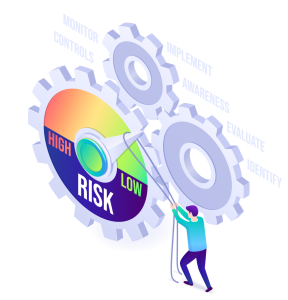Understanding the Nine Phases of Productivity - Phase Eight
Phase Eight is characterised by managing the jobs that are becoming ‘at risk,’ and reliably dealing with increasing job risk in a timely manner, before damage occurs.
A Typical Phase Eight Business
You’ve identified the constraint and everything was running smoothly and efficiently… until one day you walk into the office and it is operational chaos again. For example:
- Something happened and your people have reacted by pushing work into the system too early.
- Your work-in-progress is starting to creep up again and you are having delivery performance issues again.
- Managers are reacting to anything that goes wrong by micro-managed again.
- Staff are complaining about disruptions and priorities changing. When anyone is away it is again very disruptive.
Although you have the visual control boards in place, managers are behaving reactively to heightened job risks, and little effort is being put into eliminating the recurrent causes of risk.
It is generally better than it was, but you are beginning to recognise that you don't actually have the control you thought you had. It is unclear how to stabilise the system and it is getting increasingly chaotic.
The Transition Journey From Phase Seven
First, you’ll standardise when a job is deemed at risk and requires management intervention, rather than operator attention, and you will start making risks to having predictable and reliable constraint performance visible. Recurring risks or problems are starting to be logged and some of the most frequently occurring causes are being addressed.
Up-to-date job status visibility is being used to make better decisions. Increasingly, your people are developing a predictive understanding of the risk patterns, and are starting to see risks earlier. Your people are identifying and developing the behaviours that address risk before they warrant a management intervention. Your people are taking greater ownership of risk mitigation, and providing insights and adjustments to speed up the flow.
Increasingly, your focus moves to managing buffer penetrations and responding only to those jobs that trigger an 'at risk' status declaration.
It may take some time for all managers to adhere to these changes and some may still panic and attempt to rush jobs, unnecessarily, from time to time, but the buffers are absorbing variation sufficiently to catch the issues that arise.
The Benefits of Completing Phase Eight
You’ll notice that instead of panic and chaos, job risk is being dealt with equitably and timely. The system's buffers allow you to track, predict, and intervene to address trending risks early.
- The buffer logs mean management is able to analyse and resolve the root causes of risk to prevent reoccurrence.
- The buffered visual boards allow management to alter job assignments to minimise disruption caused by leave.
- Trending resource overloads are visible, allowing recruiting, and resourcing to minimise ripple effects through operations.
The clarity around the intervention point is eliminating confusion as to responsibilities, allowing staff to act more autonomously, more consistently, and more appropriately to abnormal variations in the flow.
- Your people are proactively responding to risk predictors, eliminating delivery performance failures. As a result, business performance reliability is improving, as is cash flow.
- Almost all jobs now finish within your system's buffered lead time.
Operational chaos is being replaced with calm predictable performance
